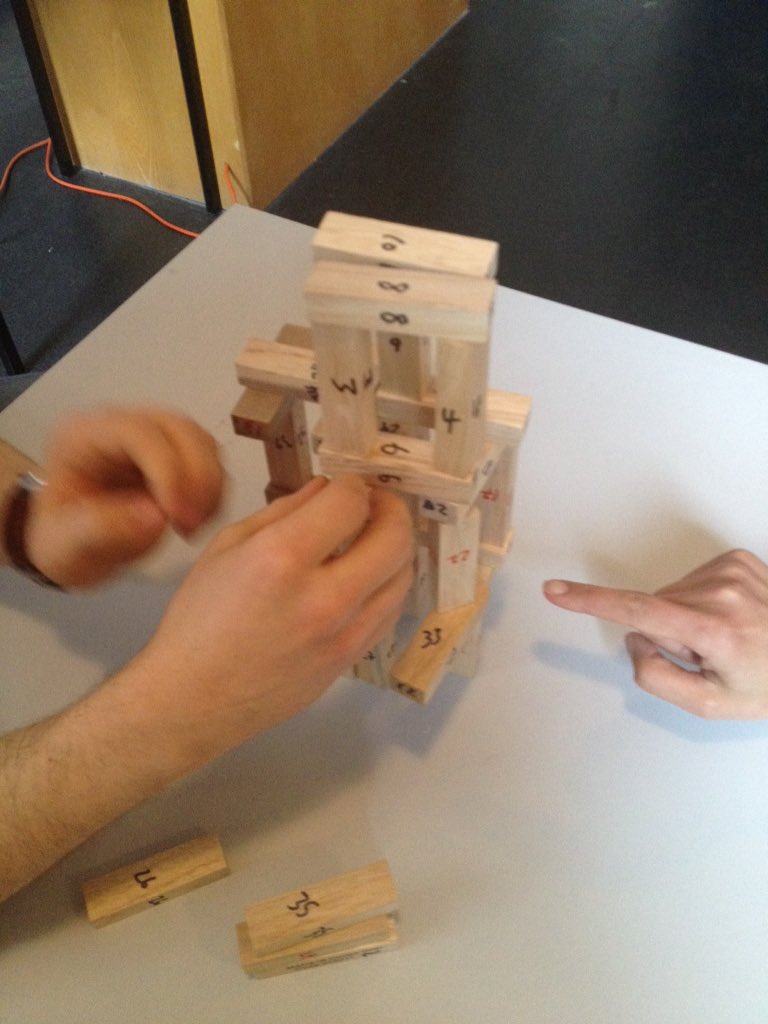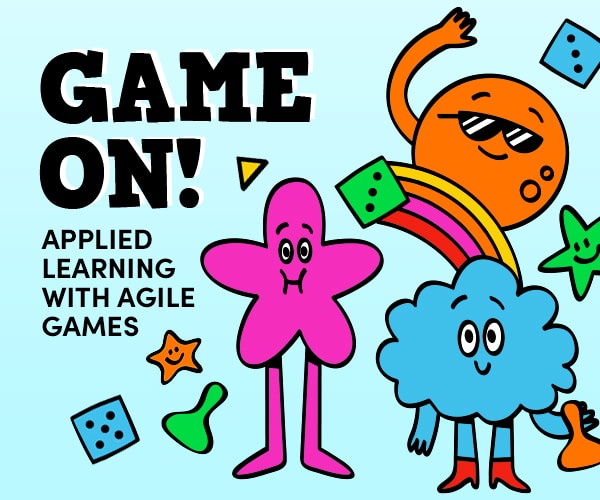I knew of this game for a while but never quite got around to playing it until it came up in discussion during several conversations at Play4Agile 2016. I then found some relevant blog posts about the game, which I’ve noted below.
I have only run this once, but will do so regularly with my students as it works better as a learning aid than the previous game I was using.
Timing: You should be able to run this in about 45-60 minutes, counting the debrief time. I only had a small group, so I expect you could have this go longer if you had more participants.
Materials:
I set of Jenga blocks, from which you’ve taken 36 to use for the game, and then numbered them on all sides accordingly. If you colour-code them in groups of 1-12, 13-24 and 25-36, you’re ready for the game.
You will also want some sticky notes and a flipchart or something similar to aid facilitation.
Instructions:
Pick a developer to build a structure with the blocks and a tester to remove specified blocks at the appropriate time. There are three rounds.
Round 1: Build a tower at least three stories tall and use all the blocks. The tester is given four numbers of ‘problem blocks’ which must be removed. This should be randomly picked by you, or a random number generator, or from others. The requirements still stand, that the structure should be three stories tall.
Round 2: Build a tower that is at least three stories tall and uses all of the blocks. This time, the developer is given the blocks in three separate batches: 1-12, 13-24, and 25-36. After each batch is used, the tester tells the developer about the two ‘problem blocks’ in each batch and modifies the structure accordingly.
Round 3: The requirements are as before, and the blocks are done in the three batches again, but this time the tester can tell the developer which are the ‘problem blocks’ as they are prepared for use.

Learning Points:
This process moves participants from a planned approach to an agile approach with sprints and then to a pair programming approach. In each round, the feedback opportunities become more useful. The observers should also notice that the ‘development’ goes faster too as ‘rework’ is reduced.
Extras:
There could be lots more done with this approach too. For example, what happens with smaller batches, or how long it takes to ‘fix’ the ‘problem blocks’ in the different approaches could also be explored.
I found this simple version at https://nandalankalapalli.wordpress.com/2011/09/15/game-test-small-test-often/ and there are also more extensive variations at http://tom-sylvester.com/lean-agile/simple-game-to-demonstrate-agile-concepts-test-small-test-often-jenga/ and at http://anagilemind.net/2014/10/27/agile-jenga/
I later found out that Sam and Karen include this game in their ‘Growing Agile: A Coach’s Guide to Agile Testing‘ book.
So you have lots to explore and try out with this game that can be as simple or as complex as you need it to be for a small group or a larger group of people too. Enjoy 🙂






